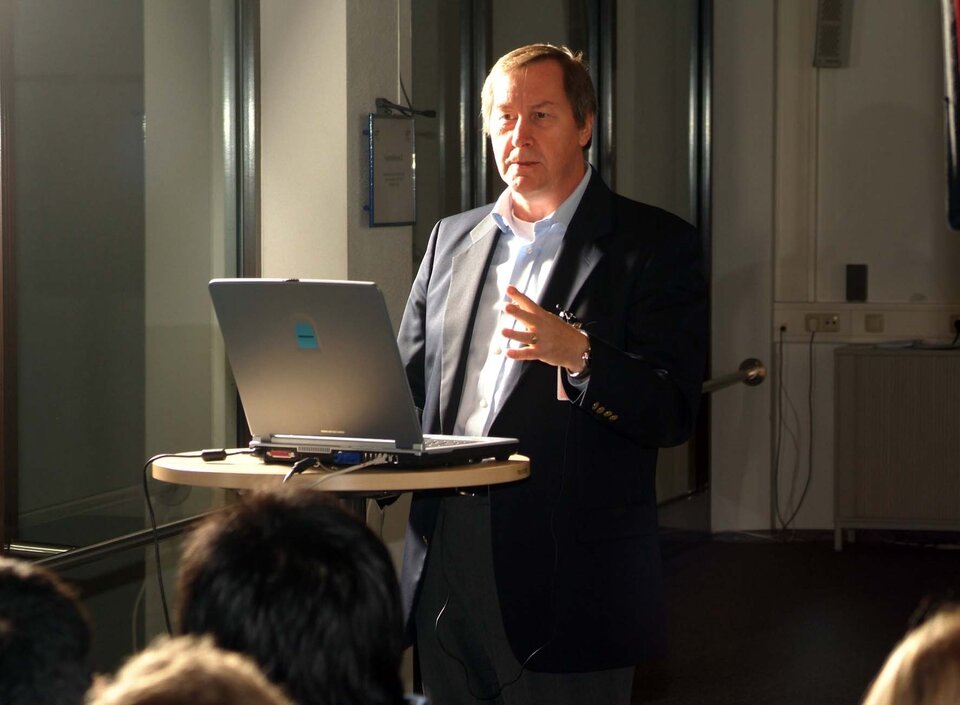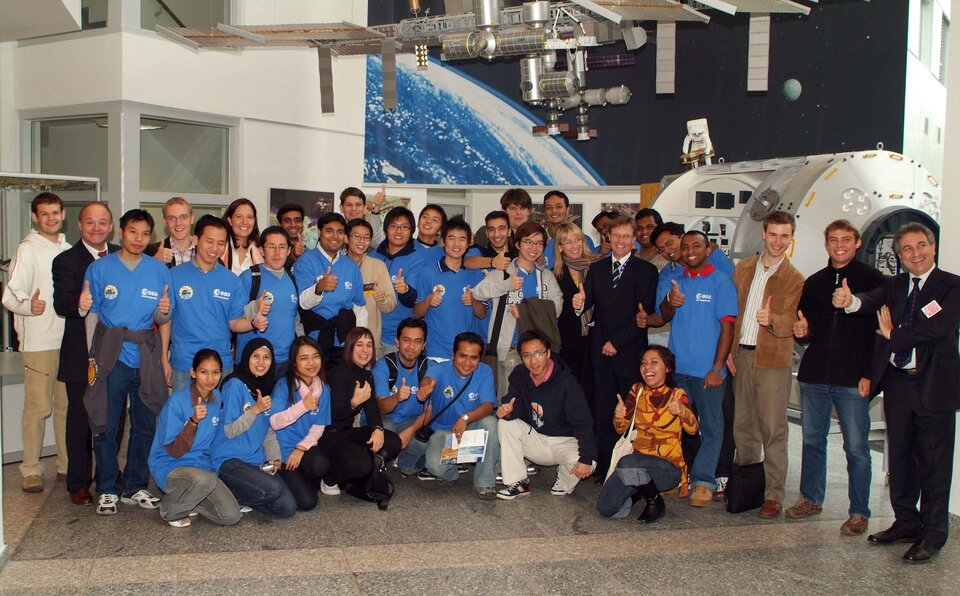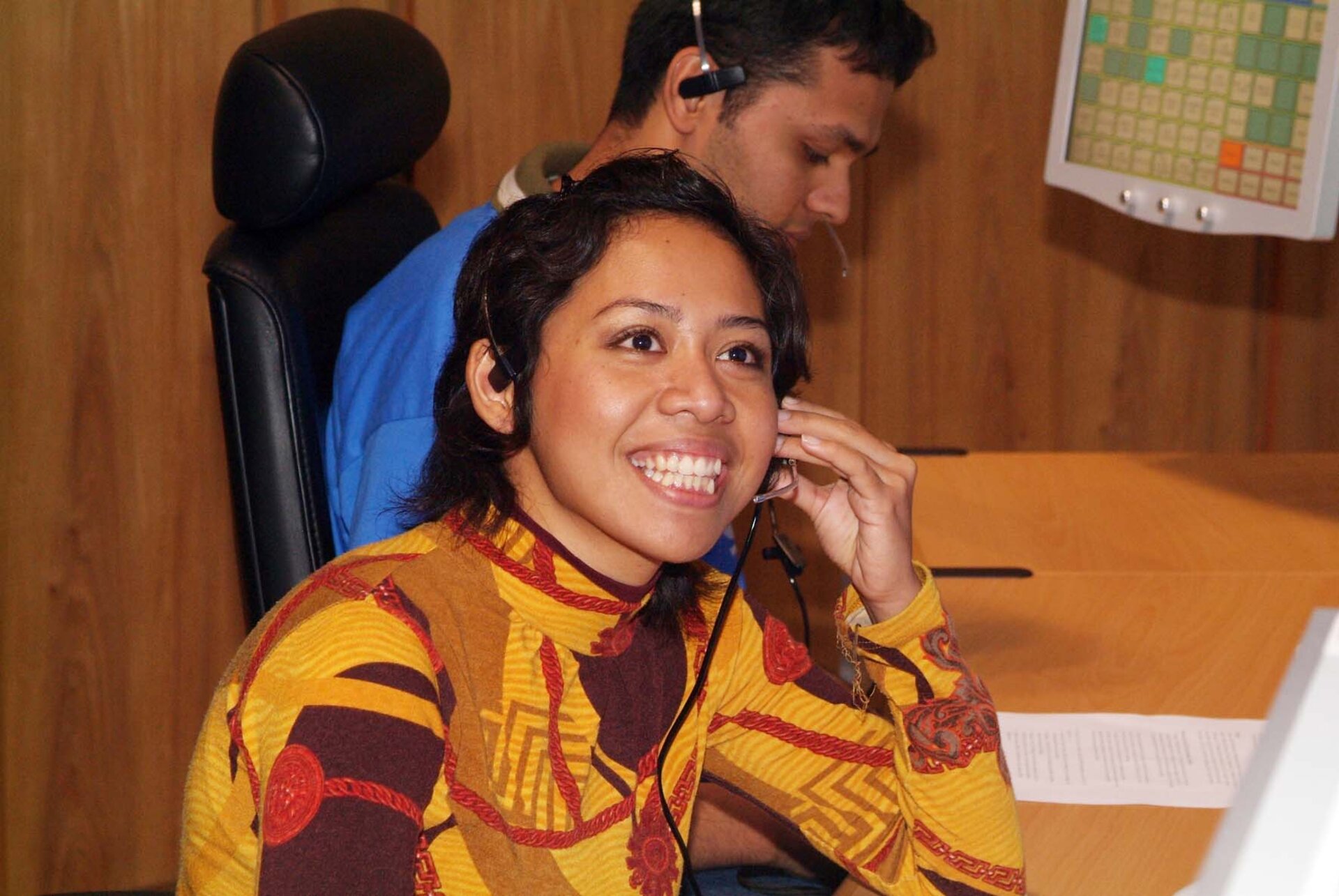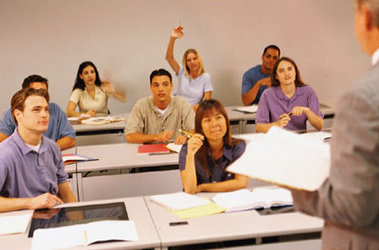Call to space: inspiration for EuMAS students
Students following the European Masters in Aeronautics and Space Technology (EuMAS) programme can expect some interesting guest lecturers in the course of their studies. Their latest guest will be a hard act to follow though, as last Wednesday the students were treated to a live call with ESA astronaut Thomas Reiter on board the International Space Station (ISS).
Twenty-eight first year EuMAS students, who are presently hosted at the Technical University of Munich, were invited to witness the call at the Columbus Control Center, located on the premises of the German Aerospace Center (DLR) in Oberpfaffenhofen, Germany, within the German Space Operations Center (GSOC).
Other EuMAS students at three of the programme's partner universities in Spain, France and Germany, followed the event from their own lecture theatres using videoconferencing.
Complex plasmas

Setting the scene for their contact with Reiter, the students received a lecture from Professor Dr. Gregor Morfill on the Plasma Experiment (PK3 Plus), which is currently being performed as part of the Astrolab Mission on board the Space Station.
Professor Dr. Morfill, from the Max Planck Institute for Extraterrestrial Physics, in Garching, Germany, is part of the science team behind the PK3 Plus experiment. Possible future applications of the team's research include the removal of unwanted dust, which could be used in fields such as medicine, crystal production and fusion reactors.
Call to ISS
Three lucky students were invited to talk to Reiter from inside the Columbus Control Center room in which the Astrolab Mission Control Centre is located. Following a short briefing on inflight call procedures by ESA astronaut and Astrolab Mission Operations Manager, Reinhold Ewald, contact with the ISS was established at 13:27 CEST (11:27 UT).

During the 10-minute call Thomas Reiter gave his Earth-bound audience a glimpse of the actual PK3 Plus experiment apparatus which had only been assembled in orbit the day before. Reiter gave a short demonstration on the electrostatic charging phenomenon that can be clearly seen in weightlessness.
There was also time for Reiter to answer questions – Terry Tian Wang asked about the safety precautions for the experiment. Thomas Reiter reassured him that there is no danger to the experiment. "The only real danger is the glass chamber which could burst," Reiter added. "However the chamber is designed and critically tested for that environment. Of course we have to watch the experiment very closely during its operation because a lot of kinetic energy is involved. Since the experiment is connected to vacuum conditions we have to monitor the ISS pressure very closely as well."
Lifetime memory
Following the call, the students were visibly excited by the experience. Wang found talking to Reiter very inspiring. "It was very exciting to see the picture of Reiter appear on the screen from space. To see him floating there and to be able to speak to him over such a long distance. This is definitely a lifetime memory". Vishal D’Souza added: "This will motivate me to become an expert in the field – I will cherish this experience all my life".
For Septika Pedi Artati, this had been an insightful day. "It has given me a greater understanding of the possibilities of the kind of research and science in different disciplines that can be done in space", she said.
EuMAS

Since 2005, the EuMAS course provides world-class education in the aerospace engineering field, preparing the students to start a successful professional activity as an aerospace engineer.
An initiative financed by the European Commission through the Erasmus Mundus programme, five European universities jointly offer a two-year Master course and multiple degrees, i.e. Master degree courses accepted by the countries of the participating universities. Each course cycle is hosted in turn by two of the partner universities. The students spend their first year at one location and move to the second university for the second year.
The 2006/7 edition of EuMAS, which is hosted by the Technical University of Munich, in Germany, and the Universidad Politecnica De Madrid, in Spain, started at the beginning of the current academic year. Twenty-nine students from all over the world were selected among more than 220 applicants. The other partner universities are the University of Pisa (Italy), Supaero in Toulouse (France), and Cranfield University (United Kingdom).
As the main non-academic contributor and sponsor of EuMAS, ESA has a commitment to provide the students with grants and a series of lectures on human spaceflight and exploration by experts in the field.
The students spend their first year at one location and move to the second university for the second year. The 2006/7 edition of EuMAS, which is hosted by the Technical University of Munich, in Germany, and the Universidad Politecnica De Madrid, in Spain, started at the beginning of the current academic year. The other partner universities are the University of Pisa (Italy), Supaero in Toulouse (France), and Cranfield University (United Kingdom).
As the main non-academic contributor and sponsor of EuMAS, ESA has a commitment to provide the students with a series of lectures on human spaceflight and exploration by experts in the field each academic year.







